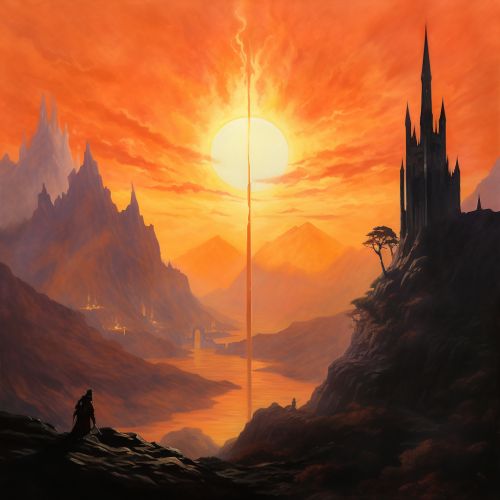Silmarillion
Origins and Publication
The Silmarillion is a collection of J.R.R. Tolkien's mythopoeic works, edited and published posthumously by his son, Christopher Tolkien, in 1977, with assistance from fantasy writer Guy Gavriel Kay. It is the source of much of the deep background to Tolkien's The Lord of the Rings. The Silmarillion is a complex work that explores themes of divine creation, rebellion, and the struggle against evil.


Structure and Content
The Silmarillion is divided into five parts: the Ainulindalë, the Valaquenta, the Quenta Silmarillion, the Akallabêth, and the Of the Rings of Power and the Third Age. These parts are not separate books, but are continuous narratives, all dealing with the Elder Days or the First Age of the World.
Ainulindalë
The Ainulindalë or "Music of the Ainur" is the first part of the Silmarillion. It describes the creation of the Ainur, angelic beings, by Eru Ilúvatar, and their fashioning of the world through musical themes.
Valaquenta
The Valaquenta or "Account of the Valar" details the characteristics and powers of each of the Valar and their enemies, the Melkor and his servants.
Quenta Silmarillion
The Quenta Silmarillion or "Tale of the Silmarils" is the third part of the Silmarillion and its longest section. It tells of the tragic history of the three jewels, the Silmarils, made by the elf Fëanor, and the wars fought over them.
Akallabêth
The Akallabêth or "The Downfallen" recounts the rise and fall of the island kingdom of Númenor, inhabited by the Dúnedain.
Of the Rings of Power and the Third Age
The final part of the Silmarillion, "Of the Rings of Power and the Third Age", is a brief account of the circumstances which led to and were presented in The Lord of the Rings.
Themes
The Silmarillion is a work of epic scope, dealing with themes of creation, rebellion, and redemption. It explores the consequences of pride and the desire for power, and the redeeming power of love and sacrifice.
Reception and Influence
The Silmarillion has had a significant impact on the fantasy genre. While it was initially met with mixed reviews, it has since been recognized as a significant contribution to the high fantasy genre.
